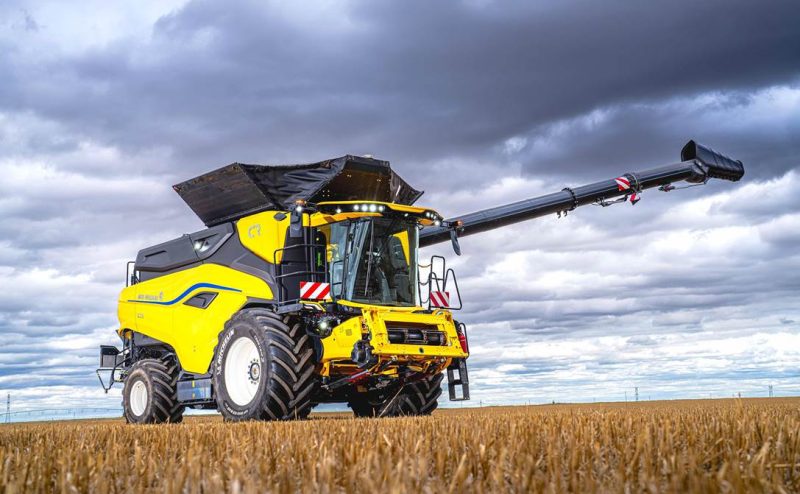
Michelin is launching two new CerexBib 2 tyre sizes which have been specially designed for the New Holland CR11 combine harvester.
Its dimensions and weight represented a unique development challenge – how to minimise soil compaction given the exceptional width of the machine and its tyres.
The addition of two new sizes, VF900/65 R46 CFO and VF 800/70 R46 CFO, expands the dimensions offered in the Michelin CerexBib 2 range.
These two new sizes are designed to meet two significant technical challenges: the load capacity of the new machine, with its much larger hopper (20,000 litres) and much wider header (15 metres) coupled with the constraints concerning the diameter and width of the vehicles, in order to comply with the various European regulations for road transport.
The tyres offer an exceptional load capacity of 19 metric tonnes per tyre, and an impressive diameter of 2.32 metres (for the VF 900/65 R46 CFO size) – representing a major advance in agricultural tyre technology. Combined with a new rear axle configuration, these high-performance fitments not only increase the vehicle’s footprint by 23%* and reduce ground pressure by 7%**, but also optimise overall fuel consumption. In effect, it is the only range on the market offering a cyclic load bonus of 10 km/h to increase the load or reduce the pressure in the tyres. This speed corresponds to the average speed of the machines at work.
The new tyres benefit from Michelin Ultraflex Technology, which celebrates its 20th anniversary this year. Launched in 2004 with the introduction of the XeoBib range, the innovative technology provides a larger footprint on the ground, protecting it from compaction and rutting for increased productivity.
A study by England’s Harper Adams University, begun in 2012, proved that tyres with Michelin Ultraflex Technology, inflated at low pressure, could increase yields by up to 4%. This technology was associated with the very first industrial standard – VF (Very High Flexion), followed by IF (Improved Flexion) from 2006. Together, these two norms have redefined the use of low-pressure tyres in farming.